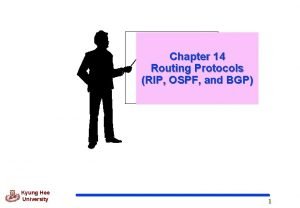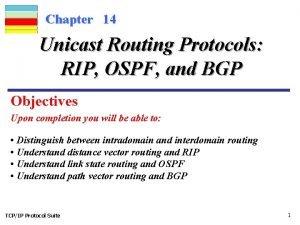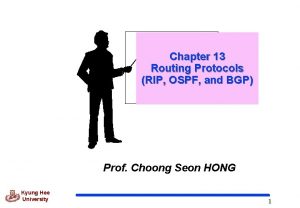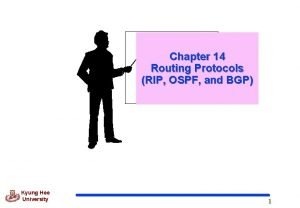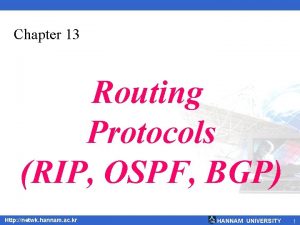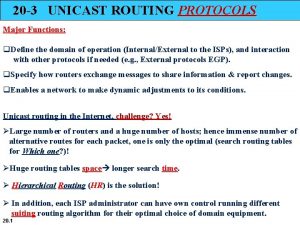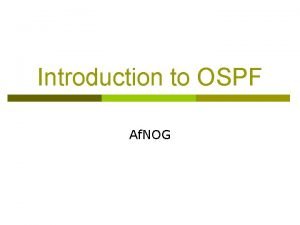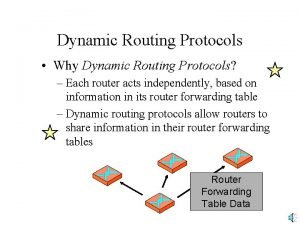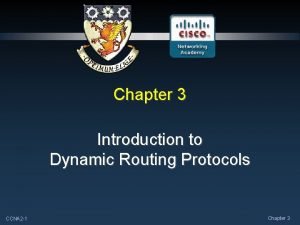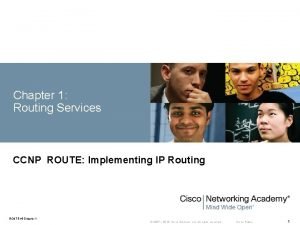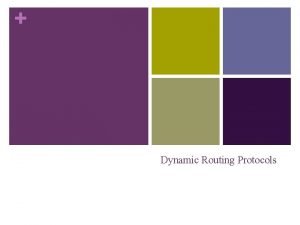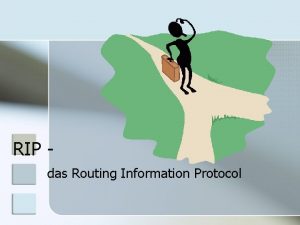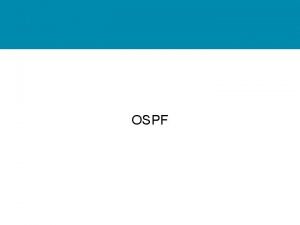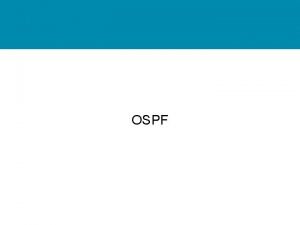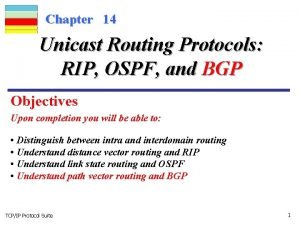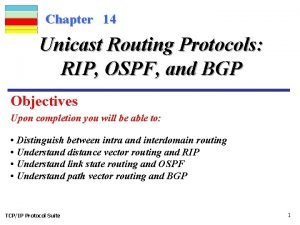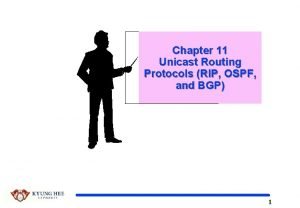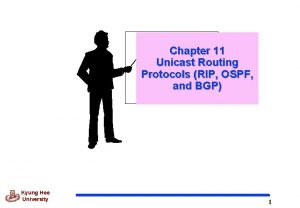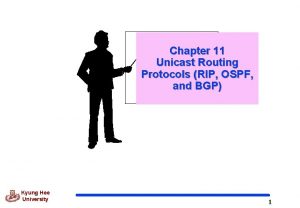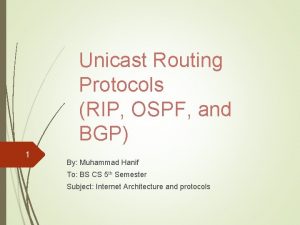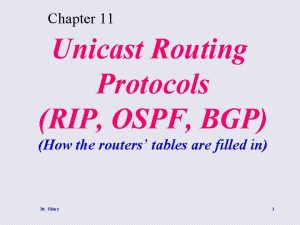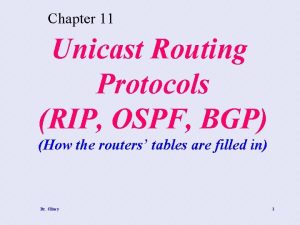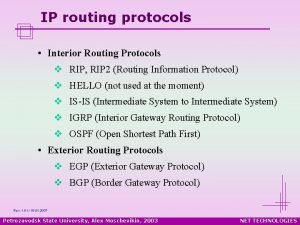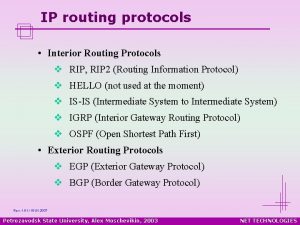Lecture 7 Unicast Routing Protocols RIP OSPF and


















- Slides: 18

Lecture 7 Unicast Routing Protocols: RIP, OSPF, and BGP Objectives Upon completion you will be able to: • Distinguish between intra and interdomain routing • Understand path vector routing and BGP Dr. Hussam Dheaa Kamel 1

7. 1 INTRA- AND INTERDOMAIN ROUTING Routing inside an autonomous system is referred to as intradomain routing. Routing between autonomous systems is referred to as interdomain routing. 2

Figure 7. 1 Autonomous systems 3

Figure 7. 2 Popular routing protocols 4

7. 6 PATH VECTOR ROUTING Path vector routing is similar to distance vector routing. There is at least one node, called the speaker node, in each AS that creates a routing table and advertises it to speaker nodes in the neighboring ASs. . The topics discussed in this section include: Initialization Sharing Updating 5

Figure 7. 3 Initial routing tables in path vector routing 6

Figure 7. 4 Stabilized tables for four autonomous systems 7

7. 7 BGP Border Gateway Protocol (BGP) is an interdomain routing protocol using path vector routing. It first appeared in 1989 and has gone through four versions. The topics discussed in this section include: Types of Autonomous Systems Path Attributes BGP Sessions External and Internal BGP Types of Packets Packet Format Encapsulation 8

Figure 7. 5 Internal and external BGP sessions 9

Figure 7. 6 Types of BGP messages 10

Figure 7. 7 BGP packet header 11

Figure 7. 8 Open message 12

Figure 7. 9 Update message 13

Note: BGP supports classless addressing and CIDR. 14

Figure 7. 10 Keepalive message 15

Figure 7. 11 Notification message 16

Table 7. 3 Error codes 17

Note: BGP uses the services of TCP on port 179. 18
 Rip ospf bgp
Rip ospf bgp Write a detailed note on unicast routing protocols
Write a detailed note on unicast routing protocols Rip ospf bgp
Rip ospf bgp Rip ospf bgp
Rip ospf bgp Distance-vector routing
Distance-vector routing Bgp poisoning
Bgp poisoning What is unicast routing
What is unicast routing Ospfv
Ospfv Ospf routing protocol
Ospf routing protocol Lab 4-1: routing concepts and protocols
Lab 4-1: routing concepts and protocols Routing and switching protocols
Routing and switching protocols Igmpv
Igmpv Routing and switching protocols
Routing and switching protocols Ccna 2 chapter 3
Ccna 2 chapter 3 Bgp administrative distance
Bgp administrative distance Introduction to dynamic routing protocols
Introduction to dynamic routing protocols Routing protocols
Routing protocols Routing tabelle erstellen
Routing tabelle erstellen Level pool routing
Level pool routing
